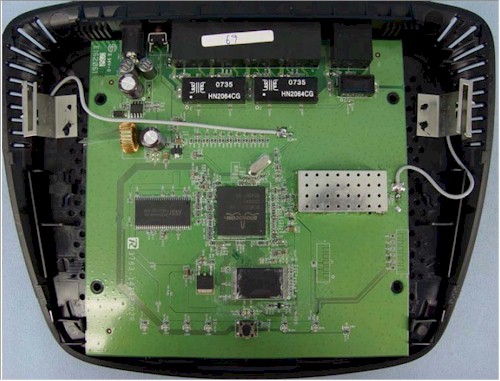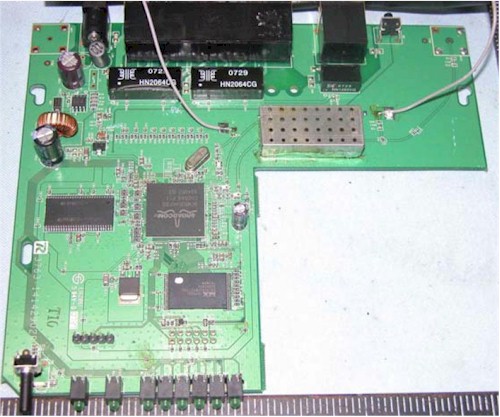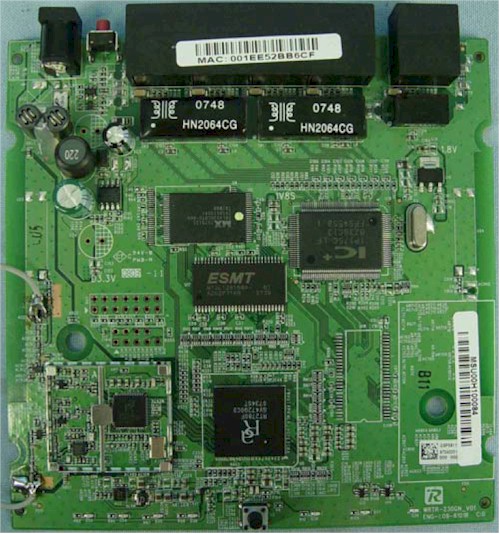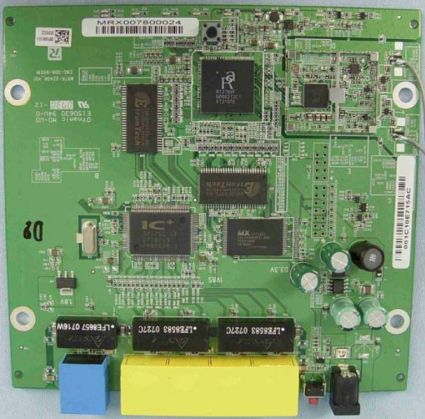The WRT54G2
Updated 7/11/2008: Corrected WRT110 parts info
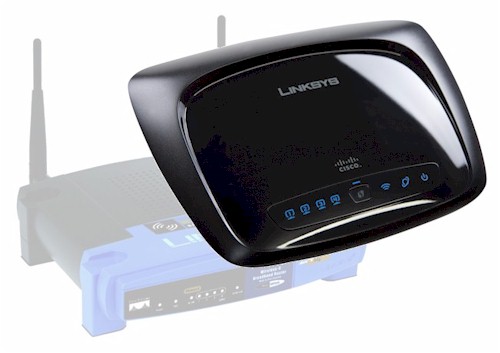
After eight or so product generations, Linksys is phasing out its mainstay WRT54G wireless router. The practical, stackable, flashable, blue box that is Linksys’ #1 selling product is getting a new look.
The WRT54G2, which is in in stores now, comes in the black Sting Ray / UFO package with internal antennas that first appeared in the WRT160N and WRT310N Draft 802.11n routers introduced at this year’s Consumer Electronics show.
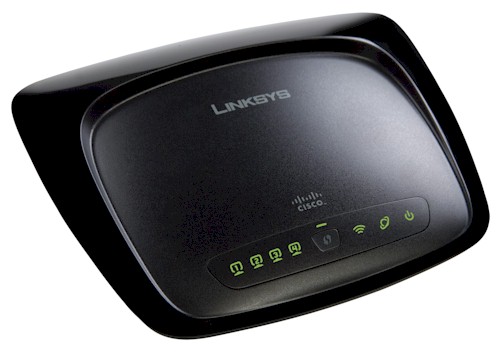
Figure 1: Linksys WRT54G2 Wireless-G Broadband Router
Figure 2 shows that the design is still Broadcom-based, using a BCM5354 802.11b/g Router System-on-Chip with BroadRange Technology.
Figure 2: WRT54G2 inside view
The BCM5354 has a 240-MHz MIPS32 CPU core and also incorporates an 802.11 b/g MAC/PHY, 2.4-GHz direct conversion radio, USB 2.0 host controller, SDRAM controller, and a configurable five-port 10/100 switch. The FCC photos aren’t clear enough to determine the RAM and flash sizes, but various sources say they are 8 MB and 2 MB respectively.
The design is interesting because only one of the antennas is routed through a SiGe SE2528L 2.4 GHz power amplifier that sits under the RF shield.
While the external packaging is different, the design really isn’t. Figure 3, taken from the FCC documentation, shows the WRT54GV82 board. This is the most recent version of the WRT54G, which was submitted to the FCC in November 2007.
Figure 3: Linksys WRT54GV82 board
The board form-factor is different, but the design also uses the BCM5354 and even has the same one-antenna-through-a-power-amp design as the WRT54G2. A similar BCM5354-based design is also found in the WRT54GV8, which was submitted to the FCC in January 2007.
The WRT110
Linksys is also tweaking another member of its lower-end wireless products. The WRT100, which was introduced only last September, is also being moved to the new Stingray packaging and being renamed the WRT110.
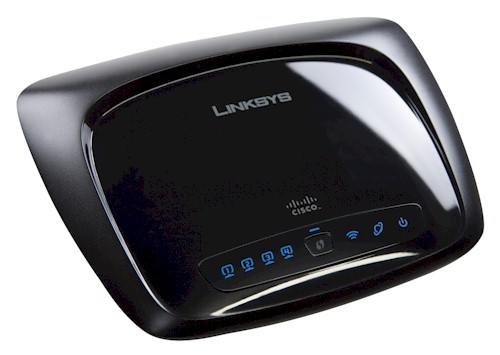
Figure 4: Linksys WRT110 RangePlus Wireless Router
Updated 7/11/2008: Corrected WRT110 parts info
But, once again, the internal design is essentially the same. Figure 5 shows the FCC photo of the 110’s board. The design uses a Ralink 1T2R (1 Transmit, 2 Receive) "MIMO" design incorporating a RT2720L 1T2R Transceiver and RT2780. I couldn’t find any information on the RT2780. But since there is no other CPU on the board, I’ll assume it handles both general CPU and MAC / Baseband duties.
An ICplus IP175C provides the 4 port 10/100 LAN switch and WAN port. I got my hands on an actual WRT110 and found that it has 16 MB of RAM and 4 MB of flash.
Figure 5: Linksys WRT110 board
Figure 6 shows the FCC photo for the WRT100 board, which is, again, too fuzzy to make out many component details. A close-up shot in the FCC docs, however, once again shows the RT2720L as the transceiver. And the rest of the components look to be the same.
Figure 6: Linksys WRT100 board
As I noted in this article, the Ralink chipset is actually draft 802.11n compliant and only uses receive MIMO. Linksys isn’t saying its RangePlus products are draft 11n compliant, however. But they are saying it uses "MIMO smart antenna technology".
I asked Linksys what the plans are for the WRT54G and WRT100 and found that they will be retired once current stock runs out. I also asked whether a similar spin will be done for the WRT54GS "SpeedBooster" router and was told that it will also be phased out and replaced with the "RangePlus" line, i.e. WRT100, WRT110 and its descendants.
Finally, since the WRT54G2, WRT100 and WRT110 don’t (yet) support any third-party firmware, I asked about the fate of the WRT54GL. Fortunately, at least for the time being, the GL will "continue on".

